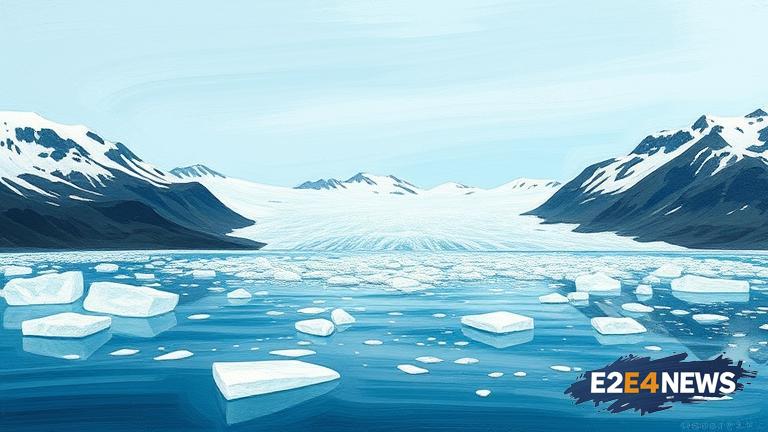Naomi Klouda, a renowned author from Alaska, has recently published a dictionary specifically focused on the state’s glaciers. This extensive publication is the result of years of research and dedication, aiming to provide a comprehensive guide to the unique terminology and features of Alaskan glaciers. The dictionary includes a wide range of terms, from basic glacier morphology to advanced scientific concepts, making it an indispensable tool for anyone interested in glaciology. With Alaska being home to some of the most impressive and diverse glaciers in the world, this dictionary is a significant contribution to the field of glaciology. The publication is expected to be a valuable resource for researchers, scientists, and students, as well as for outdoor enthusiasts and nature lovers. Klouda’s work is a testament to the importance of preserving and promoting knowledge about Alaska’s natural wonders. The dictionary is also a reflection of the author’s passion for the subject matter and her commitment to sharing her expertise with the world. By providing a standardized vocabulary for glacier-related terms, the dictionary will help to facilitate communication and collaboration among scientists, researchers, and policymakers. This, in turn, will contribute to a better understanding of glaciers and their role in the environment, ultimately informing conservation efforts and policy decisions. The dictionary’s publication has been met with enthusiasm from the scientific community, with many experts praising Klouda’s meticulous research and attention to detail. The author’s extensive experience in glaciology and her intimate knowledge of Alaska’s glaciers have enabled her to create a truly comprehensive and authoritative resource. The dictionary is also notable for its accessibility, making it an valuable tool for both experts and non-experts alike. By providing clear and concise definitions, Klouda has made the complex world of glaciology more accessible to a broader audience. The publication of the dictionary is a significant milestone in the field of glaciology, and it is expected to have a lasting impact on the way we understand and interact with Alaska’s glaciers. As the world grapples with the challenges of climate change, the importance of preserving and protecting glaciers cannot be overstated. Klouda’s dictionary is a timely and important contribution to this effort, providing a vital resource for those working to understand and mitigate the effects of climate change on glaciers. The dictionary is also a celebration of Alaska’s unique natural heritage, highlighting the beauty and importance of the state’s glaciers. By sharing her knowledge and expertise with the world, Klouda is helping to inspire a new generation of scientists, researchers, and conservationists. The publication of the dictionary is a testament to the power of human curiosity and the importance of pursuing knowledge and understanding. As we continue to learn more about Alaska’s glaciers and their role in the environment, Klouda’s dictionary will remain an essential resource for years to come. The dictionary’s impact will be felt far beyond the scientific community, inspiring a broader appreciation for the natural world and our place within it. By exploring the complex and fascinating world of glaciers, we can gain a deeper understanding of the intricate relationships between our planet’s ecosystems and the importance of preserving them for future generations. The dictionary is a call to action, encouraging us to take a more active role in protecting and preserving Alaska’s glaciers and the unique ecosystem they support. As we move forward in an era of rapid environmental change, the importance of preserving our natural heritage cannot be overstated. Klouda’s dictionary is a vital tool in this effort, providing a comprehensive and authoritative guide to the complex world of glaciology.
